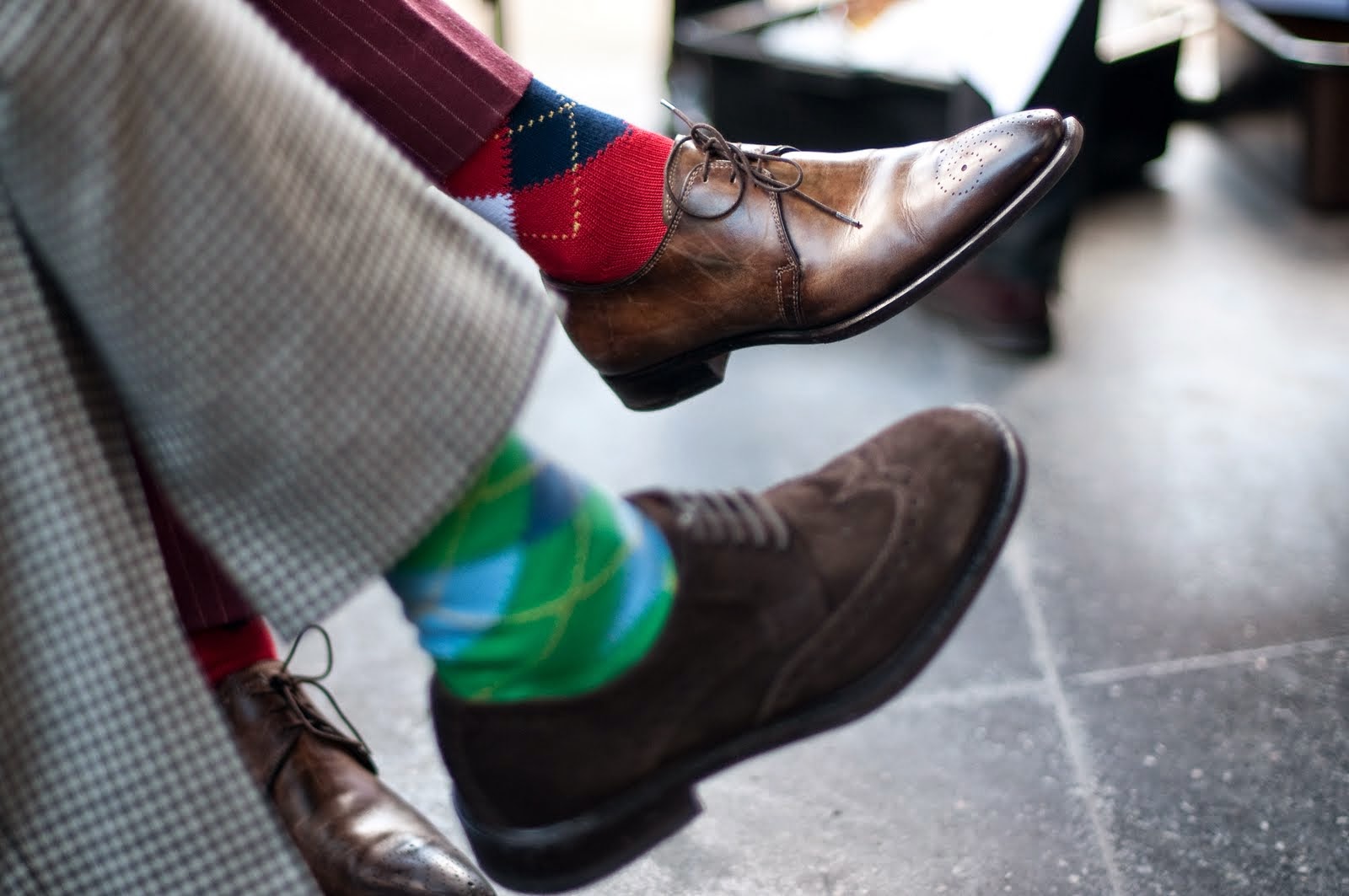A Simple Men’s Fashion Guide To Socks

Men’s socks are practical things. They cushion feet from cuts and abrasions, insulate them against cold and excessive heat, and protect them from perspiration. But socks can also be more than simply utilitarian.
Socks can pull your look together. Or they can tear it apart. Socks, even comfortable socks, can make a stylish statement. The choice is yours. Here are tips for making the right choices in buying socks for men.
Wool: Wool is a durable fiber which provides both temperature control and good moisture wicking. There’s no need to worry about itch or irritation if you purchase quality woolen socks, such as Merino, or wool blends.
Cotton: Cotton absorbs rather than wicks moisture; keep that in mind if heat and sweat are an issue. Cotton is also less durable than wool. As a result, cotton is often it is blended with synthetic fibers to improve strength, fit, and wicking.
Cashmere: Cashmere is similar to wool, but generally softer and less bulky. In order to maintain the look and feel of such luxury, special care is required in their laundering.
Most business attire is about showing respect and fitting in, so go neutral and follow this general men’s fashion rule: The color and shade of your socks should match, or be one shade darker than, your slacks. The professionals at Haberdasher Ltd can help highlight this.
Colorful and patterned socks are generally to be saved for more casual dress — or occasions and situations when you can freely express your individuality. For example, Craig Ferguson wore brightly colored socks in funky patterns with his traditional suits every night on The Late Late Show. Irreverence, after all, is virtually the comedian’s trademark. But unless you are in a position of power, do not break the neutral sock rule.
Whether going for solid, non-neutral colors or patterned socks, they key is to pick out an accent color from above the waistline, i.e. from your shirt or tie, and either complement or contrast it. Do not match the pattern of your socks to another pattern in your outfit.
When color is the ultimate goal with socks, do look for mercerized (also known as “pearl” or “pearle”) cotton socks. Mercerization provides a silky, wash-resistant sheen. The process also increases fiber strength, affinity to dye, and resistance to mildew. It also increases the fabric’s kinship with lint — but the luster is worth it.
No matter their color, athletic or sports socks are not to be worn with suits or men’s dress pants. These socks are typically ribbed and bulkier than dress socks, which makes them stand out in a bad way. The heavier weight of the socks tends to bunch-up over a dress shoe — not to mention literally rub your feet the wrong way. The contrast of ribbing can also be jarring against a smooth dress shoe. The bulk and texture can even be distractingly visible beneath a slim pair of trousers. Reserve your sport socks for athletic endeavors.
Whatever pants you are wearing, socks are required to be long enough that no leg can be seen above the sock line. Opt for ankle-dress or knee-length socks to avoid that flash of bare leg. Longer dress socks are also less likely to fall and bunch.
When wearing shorts, keep your socks as short as possible to avoid that attention-diverting visible sock line.
The average lifespan of a sock is six months to a year. No matter their age, socks with holes or those which are stretched-out should be discarded and replaced.
